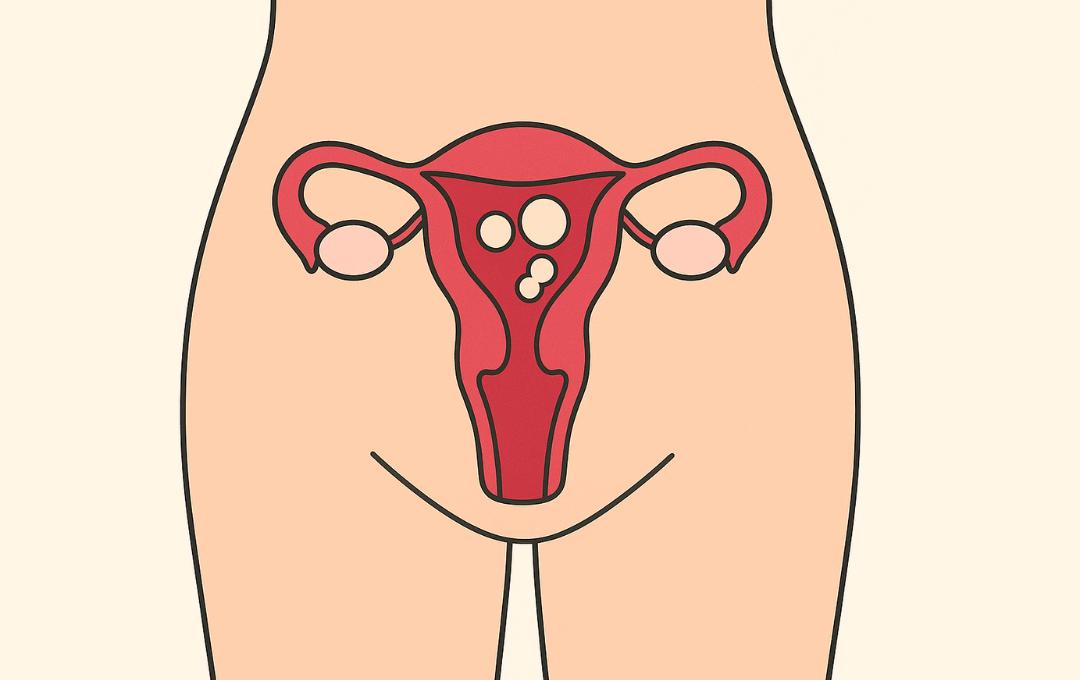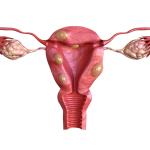
Individuals with fibroids may wonder if fibroids can move, especially when experiencing unusual sensations in the stomach area.
Many women with fibroids describe feeling shifting, fluttering, or even a sensation of kicking inside their abdomen. It’s important to understand that fibroids don’t actually “move” or float freely in the body and are attached to the uterine tissue. However, these noncancerous growths can cause sensations that feel like movement.
Understanding what causes these feelings can provide clarity about your symptoms. This blog breaks down why fibroids sometimes feel like they’re moving, explains how different types and sizes of fibroids can affect the body, and helps you identify when it’s time to consult a fibroid specialist.
Can Fibroids Move Around in the Uterus or Stomach Area?
While fibroids are stationary growths anchored to the uterus, the sensation of internal shifting or movement can be a common experience for some. This feeling is often caused by the growth of the fibroid, which can press on surrounding organs and nerves. As the fibroid increases in size, it can create new sensations of pressure or fullness in different areas of the abdomen, which may be mistaken for movement. Additionally, common digestive issues like gas and bloating can cause internal shifts and discomfort that are unrelated to the fibroids themselves but may be perceived as being caused by them.
Do Fibroids Move Around During Pregnancy?
While uterine fibroids don’t actively move within the uterus, their position can shift as the uterus expands during pregnancy. The size and location of the fibroid impact how it responds during pregnancy and whether it causes complications.
Why Do Fibroids Feel Like They’re Moving?
Although fibroids are anchored and do not physically move, many women experience sensations that mimic movement, sometimes even comparing it to a baby kicking. These feelings can be unnerving and often lead to confusion. While the fibroid’s position has not changed, these sensations typically result from fibroid growth, internal pressure, or organ displacement.
Uterine Fibroid Growth and Pressure
As fibroids grow, they can press against surrounding organs, such as the bladder, bowels, or nerves. This pressure can cause a feeling of pressure or fullness. Additionally, a rapid increase in blood flow to a growing fibroid can create a palpable feeling, and common digestive issues like gas and bloating can cause internal shifts that are mistaken for a change in the fibroid’s position. These sensations are often a sign that the fibroid is present, but do not indicate actual movement.
Natural Uterine Position Changes
The uterus naturally shifts position throughout the day, changing its position when standing, sitting, lying down, or even during bowel movements. As the uterus moves, the position of attached fibroids may also change relative to surrounding organs, creating the sensation of fibroid movement.
Gas and Digestion Can Mimic Fibroid Movement
A full colon during bowel movements can cause pressure and press against the uterus or nearby fibroids. This pressure can give the sensation that the fibroids are shifting or moving, even though they remain attached to the uterine wall. This is especially true for large fibroids, which may crowd the abdominal space. The combination of digestive activity and the way fibroids interact with nearby organs like the bladder and bowel can be misleading.
How Fibroid Sensations Fluctuate
The sensations caused by fibroids are rarely constant and can fluctuate throughout the day or over a longer period. Factors like hormone levels, fibroid size, and daily activities often influence this variability.
Hormonal Changes and Menstrual Cycle
During menstruation, increased blood flow to the uterus, contractions, and fluid retention can intensify fibroid-related pressure or cramping. These symptoms may worsen around your period, mimicking movement or internal shifting.
Fibroids During Pregnancy
While the uterus stretches to accommodate a growing fetus, it can press against fibroids, making them feel as though they’ve changed position or causing discomfort and pressure in the lower abdomen. While the fibroids are still present, the stretching of the uterine tissue can cause sensations of movement to become more widespread or intense.
Physical Activity and Positional Sensitivity
Exercise, bending, lifting, or even certain sleeping positions can increase pressure or awareness of fibroids. These sensations are not a sign of fibroids shifting, but a temporary feeling that may make them seem more active or mobile.
How Fibroid Type and Size Impact Sensations of Movement
The location of your fibroids and the number of fibroids you have can significantly affect whether your fibroids feel like they move.
and often press against surrounding organs, leading to external sensations that feel like something is shifting or bulging, especially in certain positions.
On the other hand, and often cause internal pressure, bloating, or cramping. The sensations are typically deeper and more central rather than feeling like surface-level movement.
Watch This Video to Learn About Fibroid Types
Impact of Multiple or Clustered Fibroids
When fibroids grow in clusters or large numbers, the overall bulk can dramatically alter how your uterus feels in your body. You may experience a general feeling of fullness or pressure that shifts as you move, even though the fibroids themselves stay in place.
When to Talk to a Doctor About Fibroid Movement-Like Sensations
While fibroids don’t move, certain sensations may indicate it’s time to seek professional evaluation.
You should schedule an appointment if these sensations are accompanied by:
- Sudden, sharp, or persistent pelvic pain
- Fluttering, pressure, or fullness that worsens over time
- Heavy or prolonged menstrual bleeding
- Frequent urination or constipation not explained by other factors
Even if symptoms are mild, fibroids can grow and become more problematic over time. Seeking a proper diagnosis early on allows for more treatment options and a better quality of life.
Relief from Fibroid Movement & Discomfort with UFE
Uncomfortable sensations that feel like fibroid movement may be addressed through various treatment options, depending on the underlying cause and severity.
USA Fibroid Centers offers uterine fibroid embolization (UFE), a minimally invasive procedure for shrinking fibroids to help relieve pressure. This non-surgical, outpatient procedure can effectively alleviate symptoms like pain, bloating, and urinary urgency. The procedure has a quicker recovery time compared to other more invasive procedures, allowing you to return to normal activities within one to two weeks.
If you experience sensations such as fluttering, pelvic fullness, or abdominal pressure, our interventional radiologists can help determine whether uterine fibroids are the underlying cause. A personalized treatment plan can offer real relief from debilitating fibroid symptoms.
Talk to a Specialist About Fibroid Movement
FAQs About Fibroid Movement and Sensation
Can Fibroid Movement Sensations Get Worse as Fibroids Grow?
As fibroids grow, the sensations and symptoms they cause can worsen, such as more intense or chronic pain. Larger fibroids may put more pressure on nearby organs, such as the bladder, bowels, or nerves, leading to issues including abdominal fullness, frequent urination, constipation, and back pain.
Can Fibroids Shift Position as I Lose or Gain Weight?
Fibroids do not physically move within the uterus, as they are fixed growths attached to the uterine wall. However, the uterus itself can shift slightly within the pelvis, creating the illusion that fibroids are moving, especially when body weight fluctuates.
Why do Fibroids Feel More Noticeable at Night or When Lying Down?
Fibroids may feel more noticeable at night or when lying down due to changes in body position and the way fibroids affect nearby organs, especially the bladder. When lying flat, the uterus and fibroids can press more directly on the bladder, reducing its capacity and increasing the urge to urinate.
Do Fibroids Move like a Baby in the Stomach?
Fibroids do not move like a baby in the stomach. Although it may feel like fibroids move around, they remain attached to the uterine wall. However, they can grow and change shape over time.




